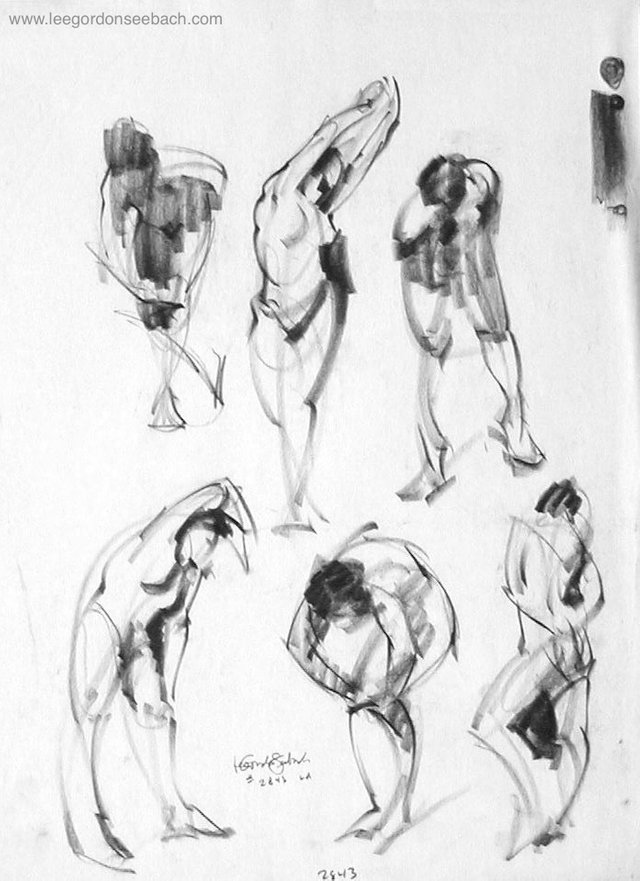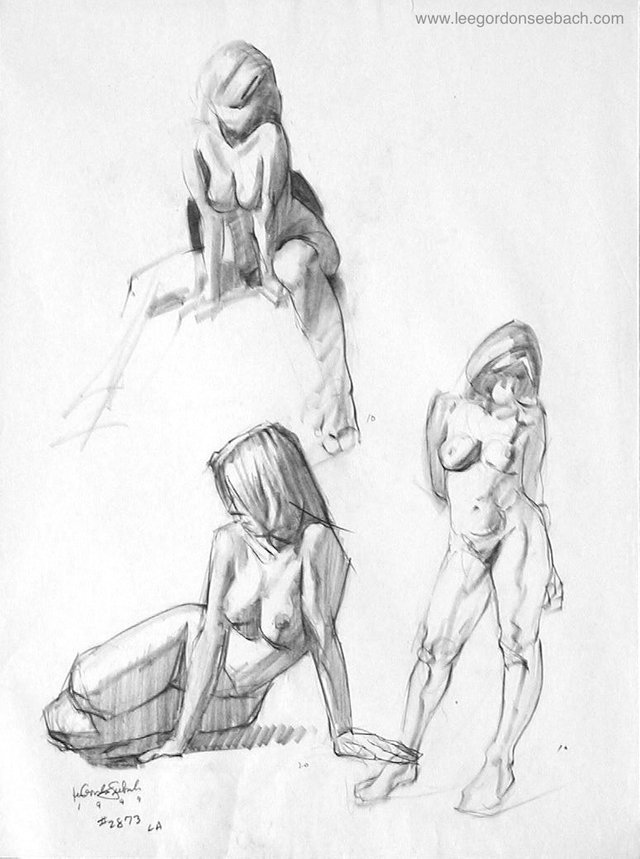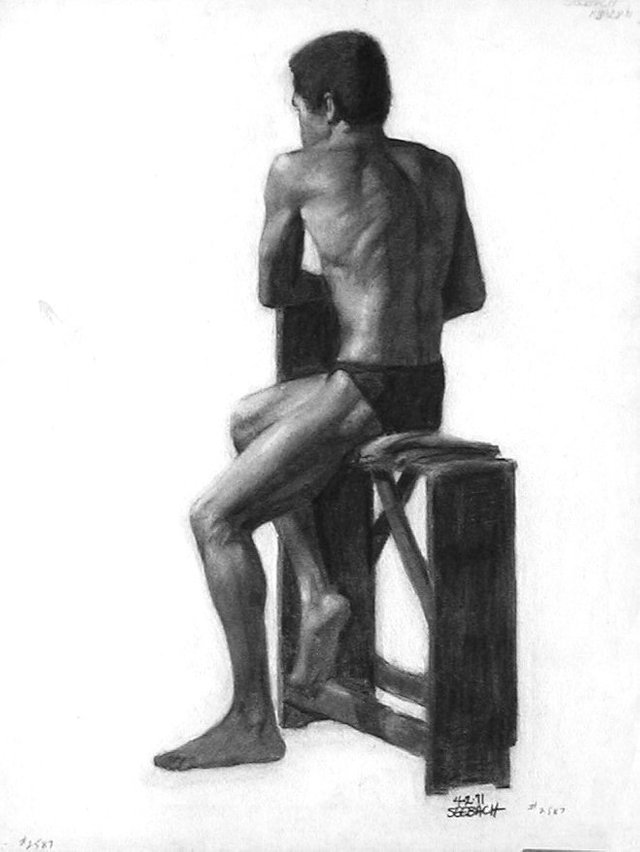Why and How Artists Sketch the Human Form to Acquire Drawing Skills
"What a piece of work is a man, how noble in reason,
how infinite in faculties, in form and moving,
how express and admirable in action, how like an angel in apprehension,
how like a god! The beauty of the world." - Hamlet, Act 2, Scene 2
Hello!
Today I'd like to celebrate the beauty of the human form and tell you a little bit about why and how many artists learn to draw by sketching folks without any clothes on. Ever wonder about that? Or did you think that we're just a bunch of perverts? Well, here I will attempt to explain it and hopefully put your mind to rest at long last about this great mystery. Here goes.....
The undraped human body has been the subject of art for centuries. In art schools today, students learn to draw in the "life drawing" class from models on a stage. Fresh off an Iowa farm at the tender age of 17, I attended the American Academy of Art in Chicago (1968-1972). In the first year, we were required to take two classes: life drawing and an art basics course. With a model posing on a stage, we would do what is known as "quick sketches" for an hour a day. The model would do a series of poses that lasted just a few minutes each while we quickly captured each pose on newsprint with china markers or charcoal pencils.
This is a page of two-minute poses on a large sheet (24"x18") of smooth newsprint paper drawn with a Ritmo charcoal pencil...

Some years later, I did these drawings in a figure drawing workshop with some poses that were held longer... two, ten-minute ones and a twenty-minute pose (lower left)...

The purpose of working with limited time is to capture the gesture (feeling, spirit, movement) of the pose, train the eye to proportion, and see the subject as a whole. This is a great way to acquire drawing skills which carry over to every other type of subject, working in any medium. In other words, if an artist can accurately draw the human figure - arguably the most difficult subject of all - then they will have the drawing skills to capture any subject using any materials.
Getting back to my art school days, after we did our intense workout of quick sketches, we spent the remaining two hours of the class working on one pose in charcoal. That pose would extend over the entire week so we could render the figure in full tone values in vine charcoal and hopefully achieve a realistic rendering of the model. We, therefore, had about ten hours to complete the drawing, working under the guidance of knowledgeable instructors.
Here's an example of one of my Academy charcoal drawings (from 1971)...

For many years after art school, I continued to attend or organize workshops with models during which we did mostly quick sketches. I wanted to keep up my drawing skills and work to improve them. Plus, it was fun to get together with artist-friends and draw. We learned from each other what to do and what not to do. I no longer feel the need for this type of work, however, since I now have all the drawing skill I need to design and craft my pictures.
Artists see the beauty that exists around us and are moved to express our appreciation in a permanent form. The human body is amazingly beautiful. We learn our skills working with it, and we celebrate it through our art.
If you'd like to watch a thirteen-minute YouTube video (age-restricted to conform to their standards...don't worry, it's tasteful) with my quick sketches, here ya go....
More to come,
Lee

Wooow... thank you so much for sharing your knowledge Lee. Your drawing are amazing. Personally, I prefer the ones you did with shorter time (one to two minutes) I love how the human body looks with just a few lines and shades.
If you could recommend me a good video or book to learn gesture drawing I will really appreciate it. ;-))
@alberto.abbate Thank you so much and you are very welcome! I'm glad you enjoy my work.
The first and only book that comes to mind would be Kimon Nicolaides' book, "The Natural Way to Draw." I'm a bit reluctant to recommend it, however, only because it is a workbook with a clearly defined regimen of study which is very structured and requires a lot of time. (Check out some of the reviews for this book on Amazon.com and you'll see what I mean.) He talks about gesture drawing but it is only a part of his overall approach. I tried to go through it, but didn't get very far, mostly because I was doing basically the same thing every day in art school! such as... gesture drawing, contour drawing, mass drawing. I learned how to draw the best way possible, as I wrote above, with great instructors: Douglas R. Graves, Bill L. Parks, and Joseph Vanden Broucke. You might check out Graves' books, too, although I don't recall how much - or even if - he talked about gesture drawing. Mostly, just know that very little knowledge is required to learn gesture drawing. It's a matter of practice, practice, practice. There ARE some YouTube videos that look very good. Just do a search and I'm sure you'll find some. Hope this helps and good luck!
@chessmonster Thank you so much for your replay. I will follow your advise: practice with the help of YouTube.... ;-)))
Thank you so much!! Whenever I feel I do a good gesture drawing I will let you know. ;-)